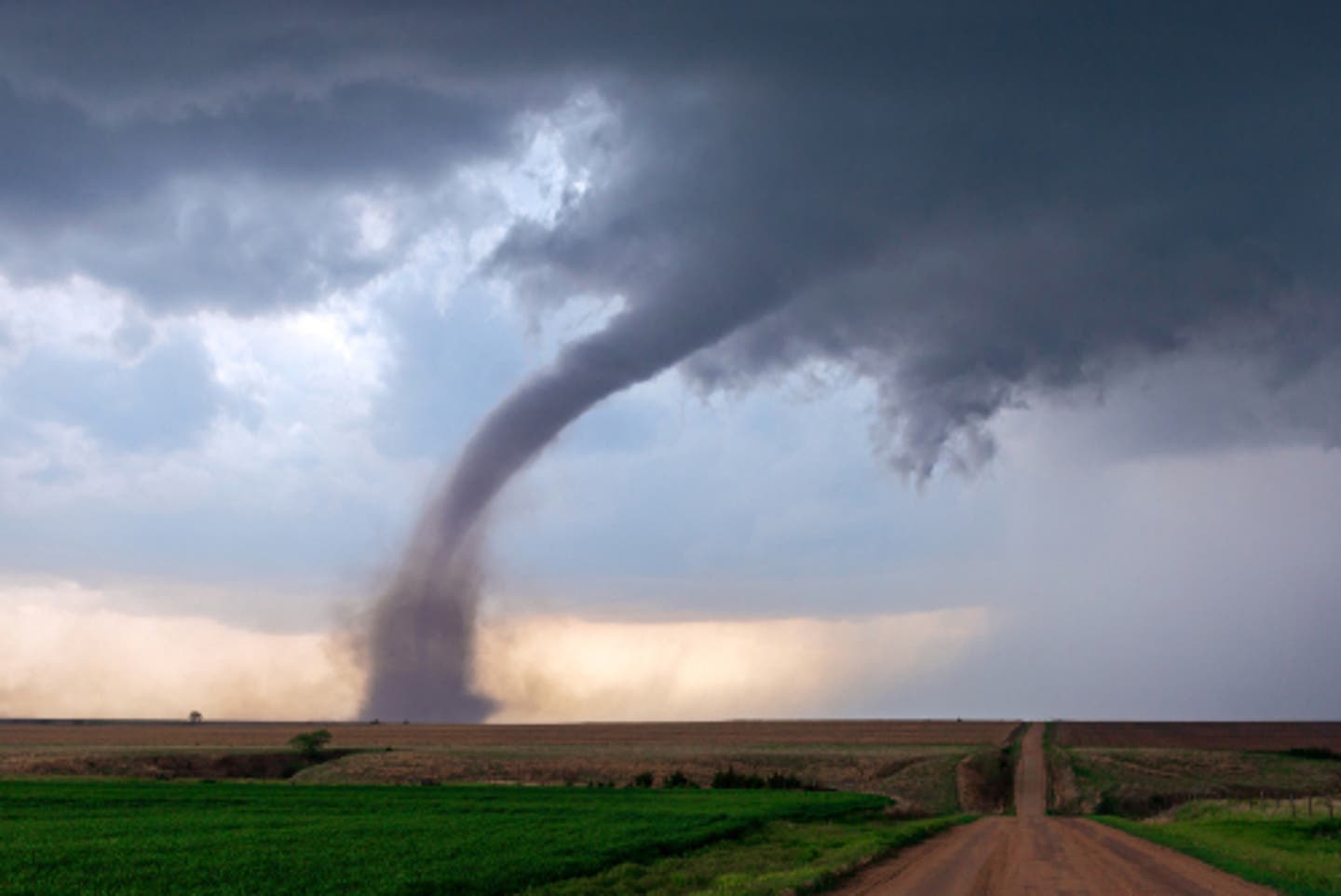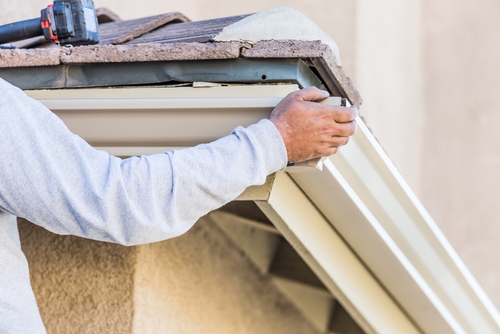
Derechos and tornadoes are violent weather events, both capable of causing intense damage to your home or business. But what are the similarities and differences between the two events?
What is a Derecho?
According to the National Weather Service, a derecho is defined as “a widespread, long-lived wind storm that is associated with a band of rapidly moving showers or thunderstorms.” Although they’re like tornadoes in terms of wind, derechos tend to follow a straight path with a direct line of damage, while tornadoes are chaotic, more vertical, “tighter” in nature, and can quickly move in different directions. Derechos are accompanied by “bow echoes,” which are strips of quick-moving showers or thunderstorms.
Derechos can happen at any time of year, but they’re more likely to occur in the warmer months.
According to experts at the Storm Prediction Center state that there are two types of derechos: serial and progressive. A serial derecho is often seen in the spring and fall. These derechos cover a large area, in both width and length, and are usually associated with strong, low-pressure systems. A progressive derecho is usually associated with a short line of storms or one singular “bow echo.” They tend to remain narrower in length in comparison to serial derechos, although they may travel for hundreds of miles.
A few more things about derechos:
- They must reach wind gusts of up to 58 mph (or greater along its length) to qualify as a derecho. Gusts up to 130 mph have been recorded for derechos, which is equal to an EF2 tornado.
- Derechos must extend either sporadically or continuously more than 400 miles in length, and 60 miles in width, to qualify.
- The word “derecho” is Spanish for “straight ahead,” “right,” or “direct.”

What is a Tornado?
The National Weather Service defines a tornado as “a violently rotating column of air extending from the base of a thunderstorm down to the ground.” They occur in all 50 states and can strike at any time of the day, but they’re most common in the southeast and Central Plains.
It’s important to know the difference between a tornado watch and a tornado warning. A tornado watch means conditions are favorable for the development of severe thunderstorms capable of producing tornadoes. Conversely, a tornado warning means a tornado has been spotted by weather radar. In either case, preparation is necessary to make sure you and your family stay safe.
For information on the signs of tornadoes and how to prepare, visit our companion article.
How to Prepare for Derechos and Tornadoes
Given their similarities, basic preparation tips hold true for both derechos and tornadoes. Weather.gov recommends:
- Create a plan (such as the SERVPRO Emergency Ready Plan) so family members and/or employees know evacuation routes, methods of communication, and other high-priority information
- Conduct thunderstorm drills regularly
- Ensure loose gutters and shutters are secure
- Trim tree branches away from your structure and power lines
- Charge batteries for cell phones, radios, and other electronic items
- Follow local news for need-to-know weather updates (consider listening to NOAA Weather Radio)
- Sign up for local community weather alerts if they are offered in your area
- Locate an interior room where you can take shelter
- If you live in a mobile home, locate a sturdy building that offers shelter

After the Storm
Following derechos, tornadoes, and other storms, there’s always the chance that secondary damage like water and fire issues can crop up.
Emergency Water Damage Tips
- Shut off the water source, if it’s safe to do so.
- Move paintings, art, and other valuable documents to a safe, dry location.
- Hang furs and leathers (at room temperature in a separate location).
- Turn off circuit breakers in wet areas of the home (if you can safely access the power distribution panel).
- Remove excess water by mopping and blotting.
- Prop up wet upholstery (cushions should be propped up evenly for equal drying, and do not put cushion covers in the washer).
- Place aluminum foil (or wood blocks) between furniture legs and the wet floor or carpeting.
- Do not enter affected areas, to avoid the risk of electrical shock.
- Do not use a household vacuum for water removal. This can cause electrical shock or damage the vacuum.
- Do not turn on ceiling fixtures if the affected room is wet or the ceiling is sagging.
Emergency Fire Damage Tips
- Empty the freezer and refrigerator, leaving the doors propped open to prevent odor.
- Wipe off soot.
- Limit movement to avoid spreading soot particles throughout the property.
- Keep hands clean to prevent further soiling of items.
- Do not wash walls or shampoo carpet and upholstery without consulting a professional such as SERVPRO first.
- Do not clean electrical appliances without consulting an authorized repair service first, to avoid the risk of injury or further damage to the appliance.
SERVPRO is Here to Help®
From minor storm damage cleanup to major construction jobs, SERVPRO has done it all. So, when your residential or commercial property is struck by a derecho, tornado, or any other manner of storm damage, and experiences water, fire, mold, or other damages, give us a call. We operate 24/7, 365 days a year, and are committed to returning your property to pre-loss condition, “Like it never even happened.”
For more information, visit our FAQ and Glossary or contact the SERVPRO professionals near you.